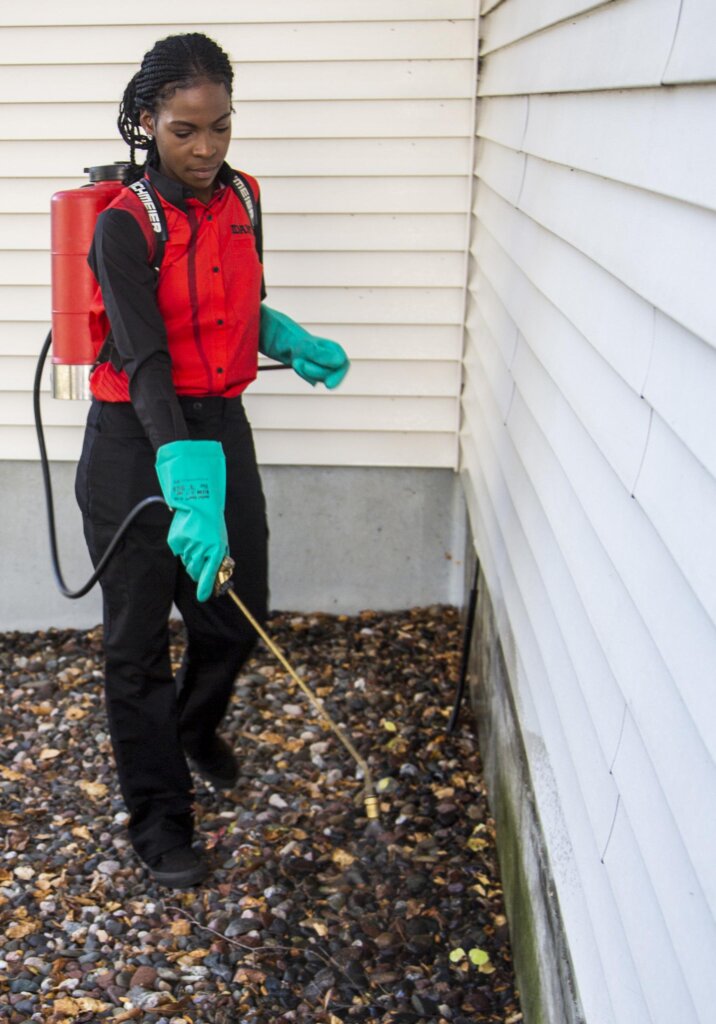Specialist A1 Charlotte Bed Bug Exterminator - Top Quality Solution Assured
Wiki Article
Bed Insect Treatment Malfunction: Contrasting Chemical Vs. Non-Chemical Solutions
In the world of insect control, particularly when handling the relentless problem of bed insects, the choice in between chemical and non-chemical treatment options can be a pivotal one. Both strategies provide distinctive benefits and drawbacks, influencing aspects such as efficiency, safety and security considerations, and total price. By taking a look at the nuanced information of each approach, a more clear understanding of which course to seek in resolving a bed insect infestation can be obtained.Effectiveness of Chemical Treatments
Chemical treatments for bed bug infestations have actually been commonly acknowledged for their fast and potent efficacy in removing these pests. When considering the efficiency of chemical therapies, it is essential to recognize that they can give a comprehensive and fast service to a bed pest trouble.Furthermore, chemical therapies have the benefit of offering residual impacts, meaning that they can remain to get rid of bed bugs even after the first application. This recurring action is particularly useful in combating any type of possible re-infestations. Additionally, the fast action of chemical treatments can bring alleviation to individuals encountering severe bed insect infestations, enabling them to reclaim control of their living areas rapidly.
Safety And Security Interest In Chemical Solutions
One crucial facet that requires cautious factor to consider when making use of chemical services for bed insect treatment is guaranteeing the security of residents and the setting. Direct exposure to certain chemicals utilized in bed bug treatments can lead to respiratory concerns, skin irritation, or other unfavorable responses, particularly in people with pre-existing problems or sensitivities.Furthermore, the ecological effect of chemical remedies is another significant factor to consider. Some pesticides used in bed insect treatments may be harmful to helpful pests, wild animals, and environments if they leach into the soil or water supply. It is important to utilize chemical therapies judiciously, adhering to safety guidelines, and taking into consideration less toxic choices to minimize these dangers and guarantee the reliable and secure management of bed bug invasions.
Benefits of Non-Chemical Strategies
Considering the prospective safety and security concerns and environmental influence associated with chemical remedies for bed pest therapy, exploring non-chemical strategies offers an appealing choice with a number of unique advantages. Non-chemical treatments are environmentally pleasant, as they do not add to air or water contamination, making them a sustainable selection for pest control.In addition, non-chemical remedies can be reliable in targeting bed bugs, including hard-to-reach locations where chemical treatments might not pass through. Techniques such as warmth treatment, vacuuming, steam cleansing, and mattress coverings offer extensive elimination without the usage of unsafe Continued chemicals. In addition, non-chemical approaches can be much less turbulent, calling for minimal prep work and enabling quicker reentry right into dealt with locations. On the whole, selecting non-chemical bed pest therapy techniques not just prioritizes safety and security and environmental protection but additionally makes sure efficient and comprehensive bug control.
Limitations of Non-Chemical Treatments

Furthermore, non-chemical treatments often require several applications to achieve effective removal. This can be taxing and might not always ensure full elimination of termite control prices all bed insects and their eggs, specifically in covert or hard-to-reach places.
In addition, the success of non-chemical therapies greatly relies upon proper implementation and thoroughness, which can be challenging for individuals without specialist knowledge. Insufficient application of non-chemical methods may result in insufficient elimination, resulting in relentless infestations and the need for extra therapies.
For that reason, while non-chemical therapies have their benefits, it is vital to recognize these constraints and consider them when establishing one of the most effective technique for taking care of bed pest problems.
Expense Contrast: Chemical Vs. Non-Chemical Options
Given the restrictions linked with non-chemical treatments, an essential facet to assess in the context of bed pest management is the expense comparison in between chemical and non-chemical alternatives. In contrast, non-chemical treatments like warmth treatment or steam can be much more expensive, with expenses varying from $1,000 to $6,000 for an entire home. While the first expense of chemical therapies might seem lower, several therapies may be needed to totally eliminate the invasion, possibly enhancing the general price.Conclusion

Considering the prospective safety and security issues and environmental effect linked with chemical solutions for bed insect therapy, discovering non-chemical methods provides a promising option with several distinct advantages.Provided the restrictions associated with non-chemical treatments, a crucial aspect to evaluate in the context of bed bug management is the expense comparison between chemical and non-chemical alternatives. In contrast, non-chemical treatments like heat treatment or steam can be a lot more costly, with expenses Home Page ranging from $1,000 to $6,000 for an entire home. While the initial expense of chemical treatments may seem lower, multiple treatments may be needed to totally eradicate the infestation, potentially enhancing the general price.In verdict, when contrasting chemical and non-chemical bed pest treatment options, it is necessary to take into consideration performance, safety and security, advantages, restrictions, and price.
Report this wiki page